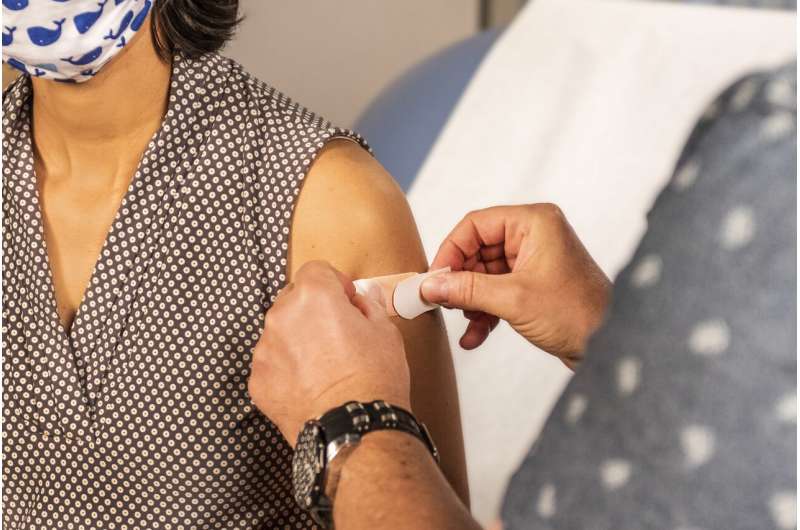This article has been reviewed according to Science X's editorial process and policies. Editors have highlighted the following attributes while ensuring the content's credibility:
fact-checked
peer-reviewed publication
trusted source
proofread
COVID-19 vaccination reduced disease disparities between low- and high-income communities

COVID-19 vaccination helped reduce disparities in disease incidence between low- and high-income communities, according to a new analysis led by Cedars-Sinai investigators.
While lower-income communities had lower vaccination rates than higher-income communities, the impact of vaccination on disease incidence was larger in lower-income communities. As a result, investigators say, vaccination led to reduced income-related disparities in COVID-19 incidence.
The findings were published today in the Morbidity and Mortality Weekly Report, a publication of the Centers for Disease Control and Prevention (CDC).
"This study is a unique demonstration of how vaccination promotes health equity," said Timothy Daskivich, MD, assistant professor of Surgery at Cedars-Sinai and senior author of the study. "Through this investigation, we also found that disparities in COVID-19 incidence between low- and high-income communities in the first two surges in Los Angeles were not observed in the first surge that occurred after vaccines were widely distributed."
The findings also serve as a model for future pandemics and mass vaccination needs across the country, said Daskivich.
"This study shows the benefit of prioritizing vaccine efforts in underserved communities to reduce disparities and improve overall population health," Daskivich said.
The analysis included vaccination and reported COVID-19 illness data from 81 Los Angeles communities, representing more than 5 million people.
Community-level COVID-19 vaccination coverage and incidence data from April 2020 through September 2021 was obtained from the Los Angeles Times COVID-19 data repository, which is populated with California Department of Public Health data.
Key findings from the Cedars-Sinai analysis include:
- In 81 assessed Los Angeles communities, COVID-19 incidence during two surges before the availability of vaccines—July 2020 and January 2021—was higher in lower-income communities relative to higher-income communities.
- During the first surge after vaccines became available—September 2021—the disparity in COVID-19 incidence between the highest- and lowest-income communities disappeared.
- The impact of vaccination on COVID-19 incidence was highest in the lowest-income communities despite lower vaccination coverage.
Study authors point to public health programs that helped reduce disease incidence disparities. For instance, efforts in California included allocating 40% of vaccination appointments to communities in the lowest quartile of the California Healthy Places Index early in the vaccine rollout.
"Our study, alongside California's initiative to target vaccine rollouts, highlight the importance of improving vaccination access and reducing vaccine hesitancy in underserved communities to reduce disparities in COVID-19 incidence," said Brennan Spiegel, MD, MSHS, director of Health Services Research at Cedars-Sinai and an author of the study. "Reducing barriers to vaccination in lower-income communities, including providing updated COVID-19 vaccine boosters, is critical to reducing disparities in disease burden and decreasing COVID-19–related illness in the United States."
Other Cedars-Sinai authors involved in the study include John Masterson, MD, and Michael Luu, MPH.
More information: John M. Masterson et al, Disparities in COVID-19 Disease Incidence by Income and Vaccination Coverage—81 Communities, Los Angeles, California, July 2020–September 2021, MMWR. Morbidity and Mortality Weekly Report (2023). DOI: 10.15585/mmwr.mm7226a5


















